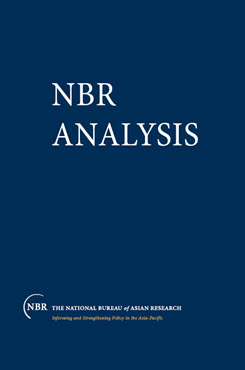Issues in Pacific Asia
An Economist's Views
This paper has three aims: (1) to elaborate desirable goals for U.S. international policy from an economist’s viewpoint, (2) to provide some capsule views on specific current issues in East Asia and the Pacific which follow from these goals, and (3) to consider the specific issue whether a trading bloc is forming in Pacific Asia.
It is important for the United States to remain engaged in Asia and the Pacific. But how exactly should it be engaged? Current thinking about the U.S. role in the post-Cold War world economy is hobbled by confusion over what our goal should be in the Pacific and more broadly. The conventional wisdom is that U.S. support for the liberal multilateral international economic system was predicated on circumstances that have now changed. It is argued, first, that a liberal multilateral trading system that may have been in our economic interests when we were by far the largest and most productive economy is no longer in our interest now that Japan and others are catching up. It is further argued that keeping U.S. markets open entails an economic cost that we may have been willing to pay for political or national security reasons when we faced the Soviet threat, but that we no longer need pay now that the threat is gone. Both these arguments rest on questionable grounds.
This paper has three aims: (1) to elaborate desirable goals for U.S. international policy from an economist’s viewpoint, (2) to provide some capsule views on specific current issues in East Asia and the Pacific which follow from these goals, and (3) to consider the specific issue whether a trading bloc is forming in Pacific Asia.


